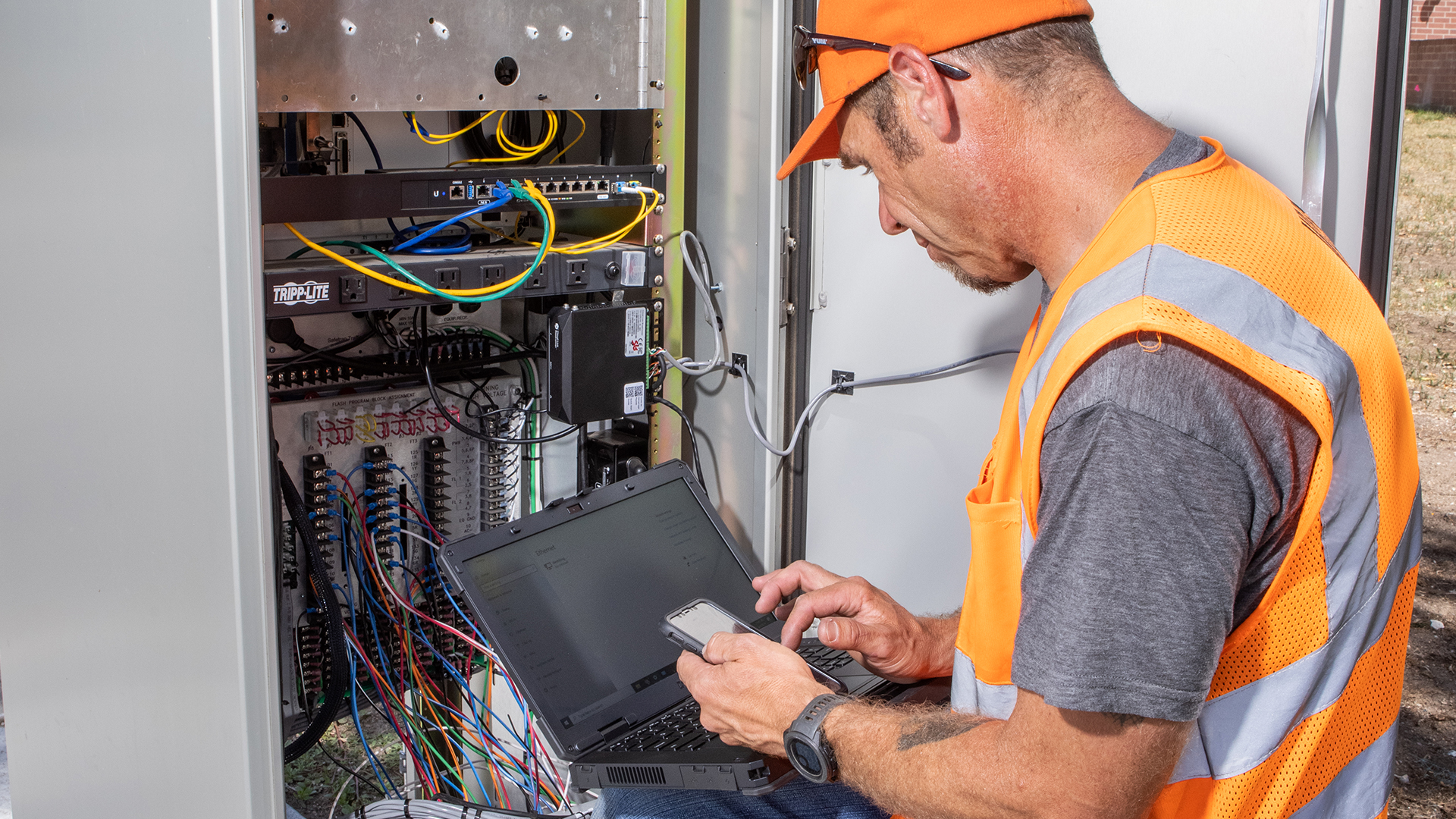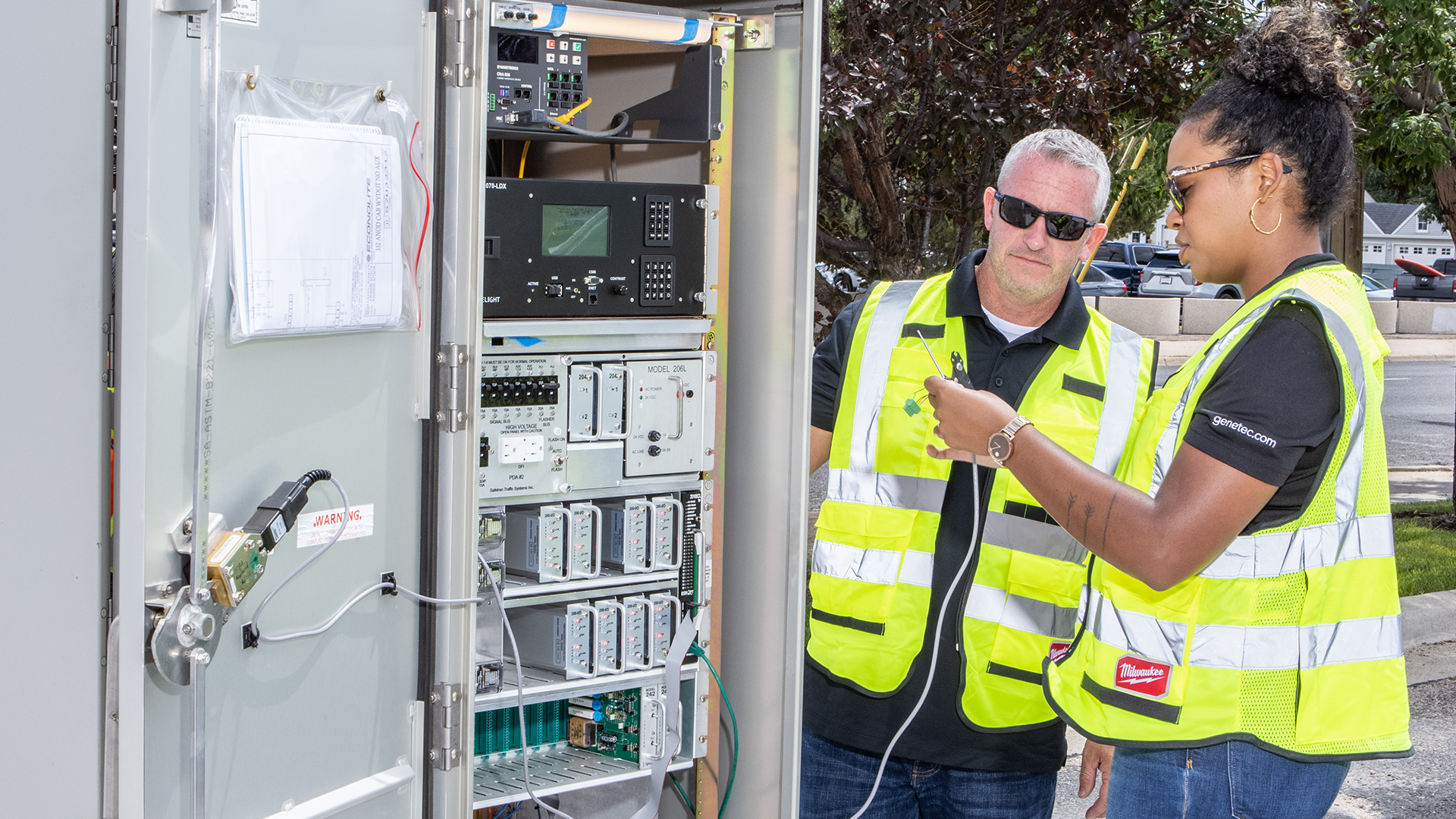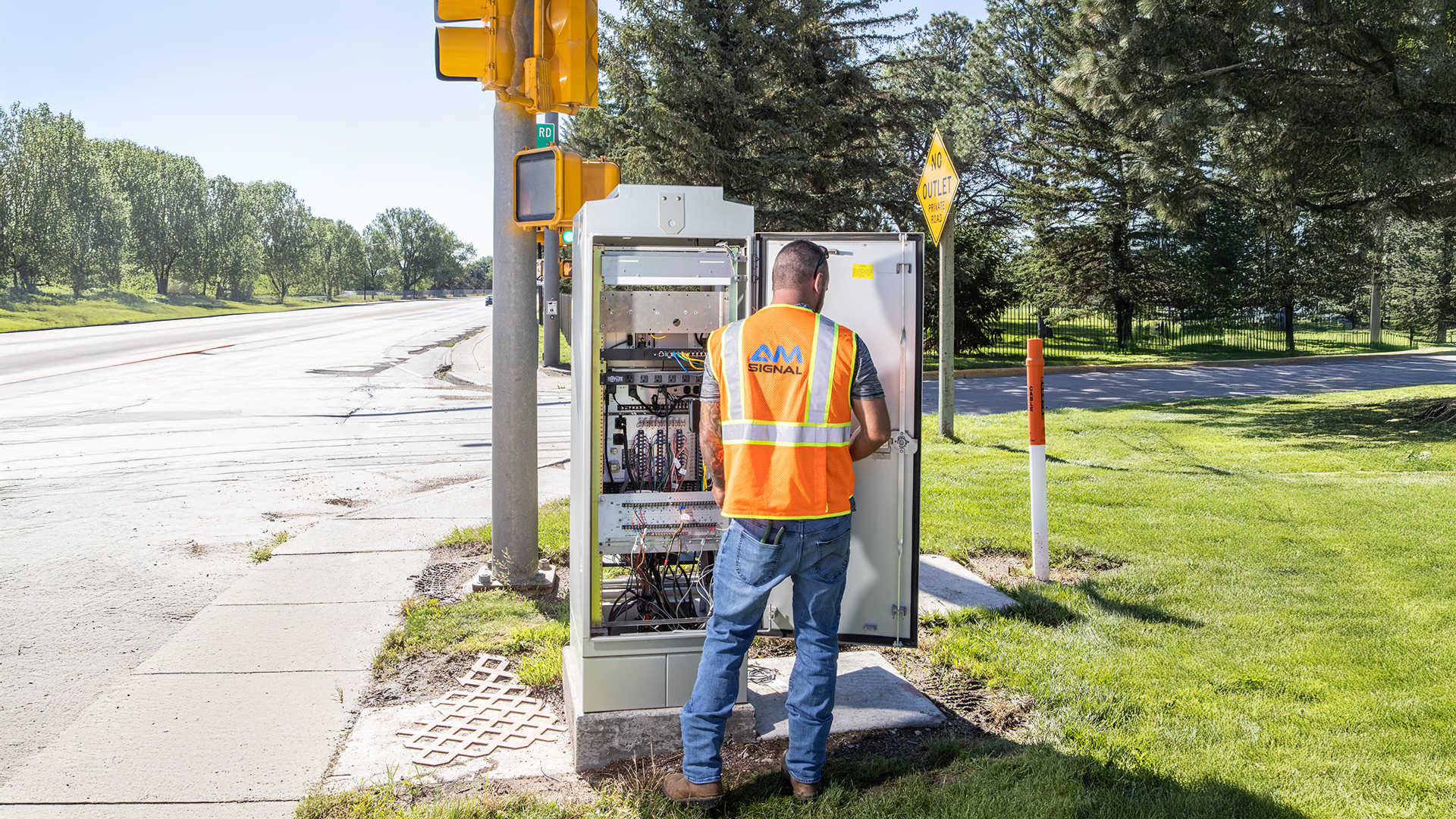Q&A with a Senior City Technician: How do you manage and secure traffic cabinet enclosures?
Learn how to secure traffic cabinet enclosures, manage physical infrastructure, track contractors, and more.
Shane Flaming, Senior Traffic Signal and Lighting Technician at the City of Folsom, in California, has spent 19 years managing the city’s signal systems. He oversees traffic signals, pedestrian crosswalks, and streetlights.
We spoke with Shane about upgrading the city's traffic cabinets with online enclosure management solutions. He shares the challenges of traditional locks, the benefits of connected systems, and the city's plans for expansion.
BROCHURE
Q: Can you tell us a bit about your traffic signal operations at Folsom City?
A: Our department is responsible for approximately 105 traffic signals in the City of Folsom. We have a few intersections that have pedestrian crosswalk signals as well.
Once all the signals are installed, we take ownership of everything from wiring and conduit to pole repair after a traffic accident. We also have a traffic operation center from which we can remotely view the signals. So, we can see whether cars are being detected or not at the intersection and if the signals are operating properly. If there's a problem, we'll receive an alert, and we send a crew out to fix the problem.
We also maintain about 40 video surveillance cameras at our intersections, which allow us to observe traffic throughout the town.
The Genetec platform is at the core of all that, so we can easily retrieve video recordings and share that information with the police department as needed. The police department can log into the system and review video as well.
KEEP LEARNING
Q: How did you manage your traffic enclosures before deploying Genetec enclosure management solutions?
A: Before the Genetec enclosure management solution, we had a two-lock system. We had a No. 2 key that was installed on the cabinet itself. We also had an industrial-strength lock on the handle of the cabinets. Only select city staff would be supplied a key for that industrial lock to get into the cabinet.
Anytime a contractor needed to work on a traffic signal and get into an enclosure, someone on our team would have to drive out and unlock the industrial lock. At that point, the contractor would typically have that No. 2 key to get into the cabinet.
After the work was complete, a city employee would have to drive back and put that industrial lock back on to secure the enclosure.
KEEP LEARNING

Q: What were the challenges that you faced with previous processes?
A: Going back and forth to unlock and lock the enclosures can add up to a lot of wasted time. Contractors or other city department staff would usually schedule the work, but sometimes, the contractor would just show up. Then, one of our staff would have to step whatever tasks they were doing and physically go out to remove the lock so that the work could be completed.
Interrupting our team's productivity to go remove a lock is challenging enough, but this mechanical lock system also left our cabinets vulnerable. Once we removed that industrial lock, the No. 2 key was the only lock on the enclosure. And at times, during longer-term projects, those industrial locks might be off for months at a time, which would leave that location unsecured. Sure, the enclosures were still locked, but that No. 2 key is readily available.
Q: Implementing a new solution isn’t easy, why did you choose Genetec?
A: I’d never heard of any other way to secure enclosures until our system integrator introduced us to the Genetec solution. I was curious from the start, especially since we were already using Genetec to manage our cameras and other departments in the city were too. After the demo, we decided to test it for a month in our shop environment. We were happy with the product and eager to implement it on a larger scale. It felt like the right move to modernize our equipment and processes. The solution wasn’t data-intensive, so it wouldn’t affect our existing network.
The compact size of the digital locks was another big factor, especially since many of our cabinets, some installed in the mid-80s, don’t have much extra space. The locks fit perfectly with the existing equipment. But the biggest deciding factor was being able to control access from my desktop, laptop, or phone. If I’m out in the field and a contractor needs access, I can unlock it remotely on my phone. This saves time and keeps productivity high, rather than having staff drive across town to unlock an enclosure.
KEEP LEARNING
Q: How was the deployment process?
A: We’ve completed ten traffic enclosures. They’re all on one busy stretch of road where we often need to get access due to the rail system that’s located there as well.
Since the cabinets weren’t procured at the same time, and each is from a different manufacturer, that made things a little challenging. But overall, the installation was easy. Most cabinets were full, so it was just a matter of finding a physical space to add the equipment.
BLOG
Q: What was the reaction from contractors after you implemented this solution?
A: The main concern from some contractors was power failures. But when I explained our processes and how we also have a backup manual key, they were on board. They like that we can unlock the cabinets remotely and can get working without having to wait for someone to meet up with them and unlock the enclosure door.
We also work with some of the rail staff. They usually work when trains aren’t operational, which usually coincides when our team is not at work. During one project, they contacted me to get into a cabinet. I was able to log into the Genetec system remotely from my laptop and open the door for them. They were confused and didn’t understand how I didn’t need to send someone out to physically unlock the door. They were just amazed and thought it was a great solution.
BROCHURE

Q: What does the staff think of the new way to lock traffic cabinets?
A: Our staff understands that we’re taking steps to secure our equipment and also make their job easier. We already have smart cards that we use to access doors in City Hall. It’s the same card they now use to unlock the traffic enclosures. The Genetec solution removed the keys from their pockets and replaced them with the smart card tucked inside their wallets. They are happy about that!
Q: Have your processes improved after installing Genetec enclosure management solutions?
A: I love the fact that Genetec logs all activity. Every Monday morning, I can pull up a report within the Genetec system and see if anybody had accessed the cabinets over the weekend, for any reason. Before this, I might have had to wait to hear from a staff member if there was a problem.
By pulling that report, I immediately know if any doors were accessed or not. It also gives me an accurate timeframe of when the enclosure was opened. Using those timestamps, I can investigate our traffic signal software to either see what had happened before the staff member got to the location or identify a specific problem.
Since the video surveillance and enclosure management systems are unified within the Genetec platform, we set ours up so that as soon as access to an enclosure is approved or denied, the nearest camera will pan towards that signal cabinet and automatically record video for 10 minutes. If someone tries to access the enclosure, the camera system will capture the individual and what they are doing. If it happens to be a member of our staff, it just gives us extra peace of mind knowing why the door was activated. If it wasn't, and someone is trying to vandalize our equipment, we have evidence at hand.
KEEP LEARNING
Q: What effects did you see after deploying Genetec enclosure management solutions?
A: Resource efficiency is a huge benefit. Having remote access to those enclosures helps us remain effective and productive. Another benefit is the extra peace of mind of knowing that our enclosures are far more secure. No one can get access to the cabinets unless our staff grants it. And the activity logs, event alarms, and camera recordings give us additional information if needed.
Another advantage of the system is that if a staff member leaves the city or retires, we don’t have to worry about getting keys back from them. We can simply de-activate their smart card, and their access to our cabinets is automatically removed.
Recently, Genetec let us know that they won the award for Best of ITS America for our enclosure management solutions at the City of Folsom. It’s exciting to work with such an innovative technology partner on breaking new ground in traffic management solutions.
FEATURE NOTE
Q: Are you planning on any new expansions?
A: We currently have a plan to install more enclosures in the next couple of years. There's a grant that falls under our Intelligent Transportation Systems (ITS) program that we'll use to fund some of that expansion. We'll be building out a fiber connection to all of our traffic infrastructure first and then we'll install them. It's a work in progress, but we're excited to expand the Genetec enclosure management solution across all the traffic cabinets in our city.

Before finding out about this solution, I had plans to eventually purchase brand new industrial locks. That’s about $10,000 of locks that wouldn’t give me access to the information that I now have with this digital solution. With these new enclosure management solutions, not only are we getting higher levels of security and efficiency, but we’re collecting valuable data on our day-to-day operations.
KEEP LEARNING
Q: What do you have to say about the cost?
A: Some cities might find this solution costly, but when you add up the hours from staff having to go back and forth to lock and unlock cabinets, the cost of replacing locks when they are weather-worn or lost, and the risk of possible infrastructure vulnerabilities because the cabinets aren’t as secure as they should be - there’s a definite recoup on investment over the long haul.
BLOG
Q: What advice do you have for other cities?
A: What I would suggest to other cities is to check the voltages before hooking up to the new hardware within the different cabinets. Since our traffic enclosures came from various vendors, the voltage for each cabinet was different. We learned quickly that it was important to double-check the wiring and confirm the voltages.
